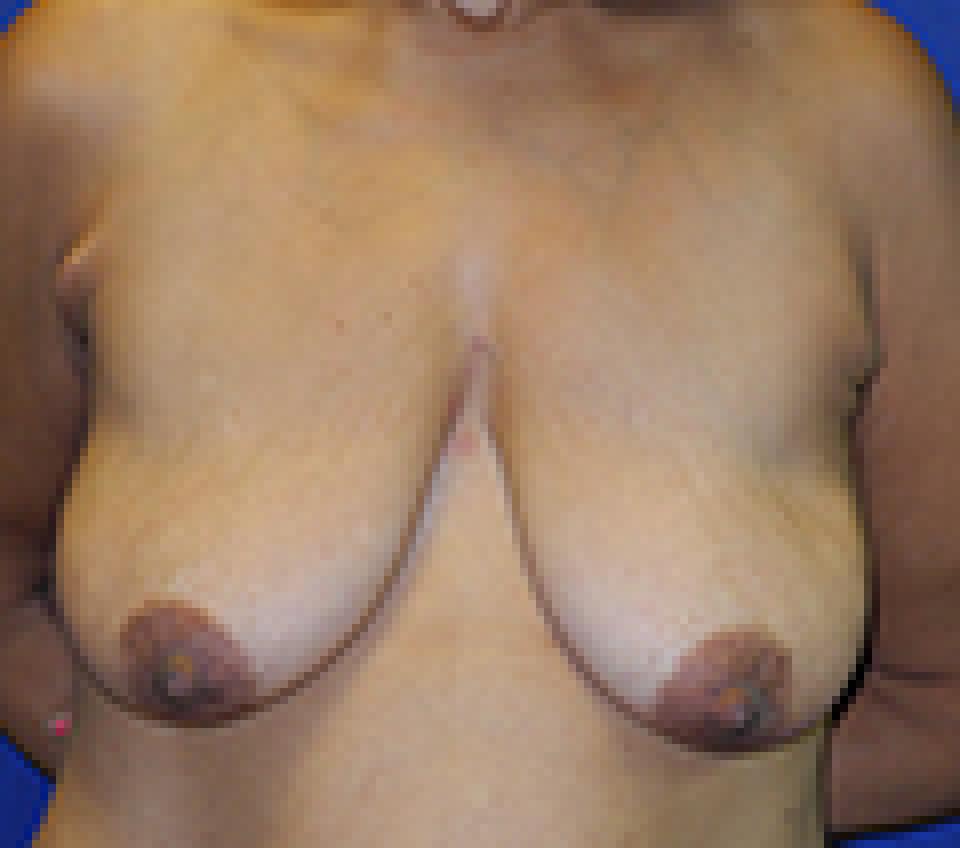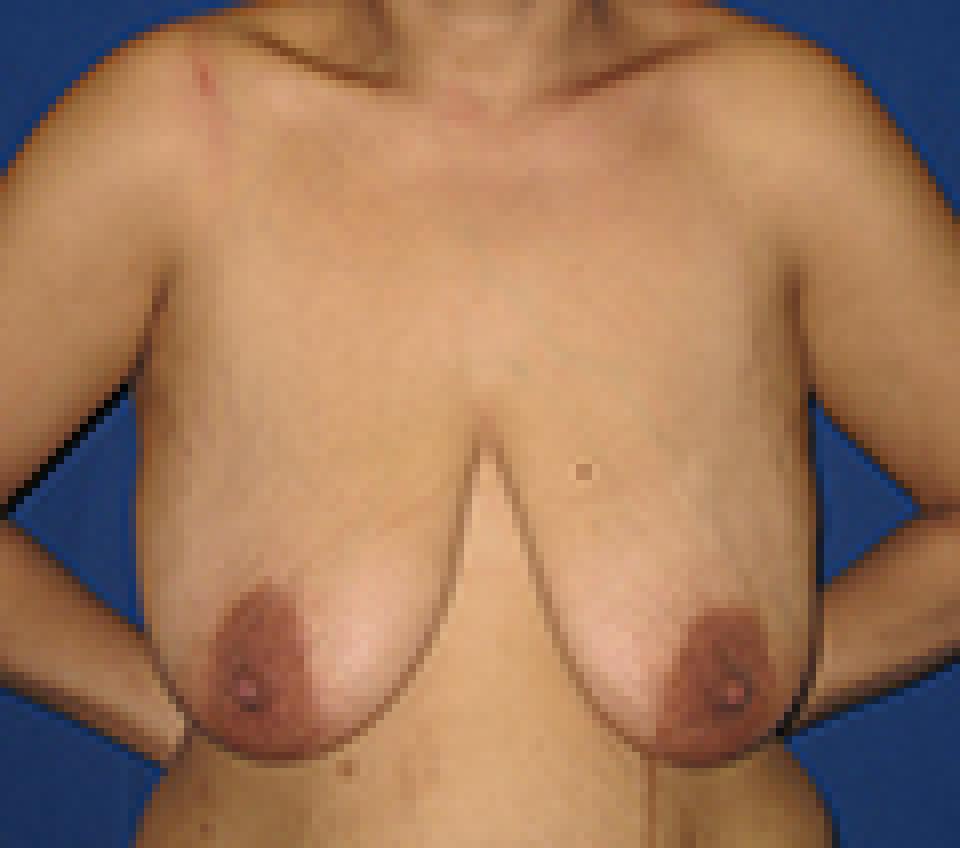 before
before
 after
after
This 37 year old woman reached her plateau weight after losing 91 pounds following bariatric surgery. She had a breast lift or mastopexy using a technique which leaves behind scars in the shape of an “anchor.”
A breast lift or mastopexy is an operation which rearranges breast tissue so that the new breast shape is typically shorter and rounder. Unfortunately, patients who have lost a large amount of weight often do not have enough breast tissue remaining to rearrange into a naturally appearing breast. This woman was fortunate to have enough breast tissue after a 90 pound weight loss to achieve the breast shape that is visible in her post surgery photographs.
While an implant can provide the volume that is lacking after massive weight loss, the weight of the implant can also be very taxing on compromised skin, such as that which is typical after massive weight loss. Commercially available skin substitutes can provide the strength needed for successful use of implants in such cases.
 before
before
 after
after
This 49 year old woman reached her plateau weight after losing 100 pounds following bariatric surgery. She is an excellent example of an individual whose breast tissue had been largely replaced with fat and as such, after massive weight loss, there was not enough breast tissue remaining to rearrange into a new breast shape that appeared typical of what one might expect after a breast lift or mastopexy.
From an aesthetic standpoint, this woman informed me that she would be satisfied with any improvement in her breast shape. Her primary goal, however, was to remove the extra skin that otherwise laid across her abdomen unless she wore an underwire bra. Her skin had lost a great deal of its elasticity and was unlikely to tolerate insertion of an implant to replace lost volume without sagging or becoming ptotic in a relatively short period of time. The use of commercially available skin substitutes, which would have allowed use of an implant, was not an option for her.
Her post surgical photographs show her result after I performed a breast lift or mastopexy using a short scar technique that leaves behind scars in the shape of a “lollipop.”
 before
before
 after
after
This 26 year old woman reached her plateau weight after losing 74 pounds following bariatric surgery. She had a breast lift or mastopexy using a technique which leaves behind scars in the shape of an “anchor.”
In some patients who lose a large amount of weight, the natural end point of the breast laterally disappears and the breast appears to continue around towards the back. This is what has happened to this woman.
In selected individuals who have this problem, the “anchor” scar type breast lift can be amended to remove that skin excess on the side of the body beneath the arm. This is the reason that I selected that particular breast lift technique in this woman even though the scars that it leaves behind are longer and more difficult to conceal in a swimsuit.
Looking at her photographs after surgery, it is obvious that there is no longer a "wing" of skin that continues laterally towards the back. Instead, the breast has a round shape and ends as it typically does before the side of the body that lies beneath the arm.
Unfortunately, there is now a visible scar there. This is an example of what I refer to as a “trade off” in plastic surgery. It is important to decide what is more important to each individual patient- a scar or better contour. Sometimes, it is not possible to have both!
 before
before
 after
after
This 35 year old woman reached her plateau weight after losing 56 pounds following bariatric surgery. She had breast lift or mastopexy using a short scar technique which leaves behind scars in the shape of a “lollipop.” Some breast lifts or mastopexies are performed using a technique that results in scars that look like an “anchor,” but I prefer to use this shorter scar technique because scars are never visible in the cleavage nor on the side of the body beneath the arm. This makes swimsuit selection much easier.
This woman has a history of poor scar healing. It is relatively easy to see dark and thickened scars on her abdomen from her bariatric procedure. I feel that it is especially advantageous to avoid the “anchor” shaped scar in individuals whose scars do not heal well.
When performing a breast lift or mastopexy, very little breast tissue is removed. Instead, the existing breast tissue is rearranged so that the new breast shape is typically shorter and rounder than it was previously.
Performing a breast lift in an individual who has lost a great deal of weight is often very challenging. They tend to have an extreme amount of skin excess and relatively little breast tissue. As such, a great deal of skin must be removed while significant effort is made to preserve every bit of breast tissue possible to achieve a natural looking breast.

